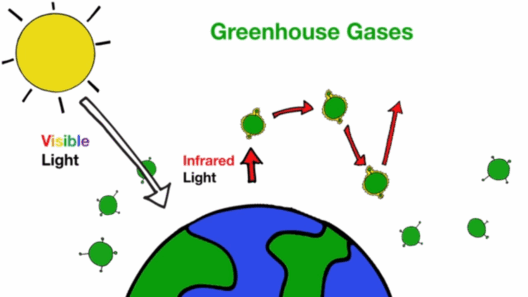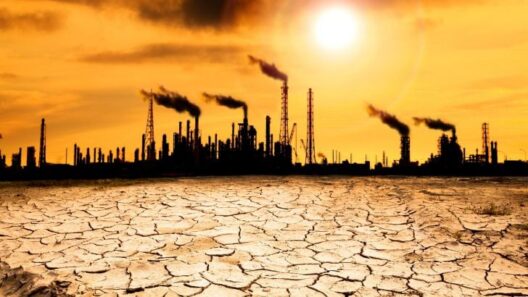Biological systems are masterpieces of complexity, intricately balancing interactions among species, ecosystems, and their abiotic environments. However, the disquieting observations of ecological disruption raise critical questions: what happens when nature breaks down? Through varied lenses—ecological, climatological, and sociological—this discourse illuminates how critical biological systems are undergoing transformative changes, often at the expense of biodiversity, stability, and sustainability.
The anthropogenic influences on our planet have intensified in recent decades, primarily due to industrial advancements and increased resource extraction. Consequently, natural ecosystems face unprecedented pressures. Front and center among these pressures is climate change, which serves as a catalyst for both gradual and abrupt ecological shifts. Temperature fluctuations, altered precipitation patterns, and rising sea levels disrupt habitats, pushing species toward new ecological equilibria or, in some cases, into extinction.
One of the most alarming manifestations of societal neglect for ecological integrity is the phenomenon of species migration. As global temperatures rise, many flora and fauna exhibit what is termed “range shift,” moving poleward or to higher elevations in search of suitable habitats. This adaptive response, while demonstrative of resilience, can lead to significant ecological imbalances. When native species are displaced by invaders adapting more readily to changing conditions, local biodiversity diminishes. The ripple effect of this loss is profound, affecting ecosystem functions such as pollination, seed dispersal, and nutrient cycling.
Moreover, alterations in phenology—the timing of seasonal biological events—further exemplify how interconnected systems react to climatic perturbation. In temperate regions, for instance, plants may bloom earlier due to milder winters, while the synchrony with pollinators such as bees can falter, ultimately affecting crop yields and food security. This misalignment within biological clocks indicates a significant breakdown in ecological relationships, echoing the fragility of nature.
Climate change exacerbates the incidences of extreme weather events: hurricanes, droughts, floods, and wildfires intensify, leaving ecosystems vulnerable to collapse. Coral reefs, often dubbed the “rainforests of the sea,” are profoundly affected by thermal stress and ocean acidification. The subsequent phenomenon of coral bleaching represents not merely aesthetic loss but threatens countless marine species that depend on these reefs for habitat and sustenance. The degradation of such keystone ecosystems results in a cascade of adverse environmental effects, including diminished fish populations and disrupted food webs.
Parallel to climate-based disturbances is the phenomenon of chemical disruption. Pollution, particularly from agricultural runoff and industrial discharges, introduces a litany of contaminants into ecosystems. Pesticides, heavy metals, and microplastics infiltrate soil, water, and air, revealing the toxic underbelly of human activity. The biomagnification of these pollutants poses serious health threats not only to wildlife but also to human populations reliant on these ecosystems for their livelihoods. The Compendium on Environmental Health suggests that chronic exposure could lead to neurological disorders and reproductive issues, demonstrating that environmental degradation bears consequential socio-economic repercussions.
Furthermore, the intricate web of human-ecosystem interactions highlights the role of indigenous knowledge in addressing breakdowns in biological systems. Indigenous peoples, with their deep-rooted understanding of local ecology, offer valuable insights into sustainable practices that promote resilience. Their traditional ecological knowledge can be instrumental in devising adaptive management strategies that mitigate the impacts of climate change and restore habitats. Such collaborative approaches leverage both modern science and ancient wisdom, fostering a more holistic appreciation of nature’s complexity.
The systemic breakdown of biological systems is not destined to be an irreversible narrative. Mitigation efforts rooted in ecological restoration, conservation, and adaptive management show promise. Rewilding, for example, seeks to restore ecosystems to their natural trajectories by facilitating the return of apex predators and keystone species. This reintroduction has implications for biodiversity enhancement and ecosystem stability, serving as a counter-narrative to ecological collapse.
Technological innovation also plays a pivotal role in addressing the challenges posed by climate change and environmental degradation. Advances in biotechnology, renewable energy, and sustainable agricultural practices can lead to more resilient biological systems. For instance, precision agriculture minimizes chemical inputs through data-driven approaches, thus reducing ecological footprints and fostering soil health. Additionally, the shift toward renewable energy sources diminishes reliance on fossil fuels, thereby lessening greenhouse gas emissions and contributing to climate stabilization.
Public consciousness surrounding these issues is imperative. Elevating awareness about the fragility of biological systems through education and advocacy encourages individuals to engage in sustainable practices. Grassroots movements, community initiatives, and policy shifts form critical scaffolding for fostering an ecologically literate populace. The integration of environmental education into curricula from an early age can cultivate a generation of individuals equipped to tackle the multifaceted challenges posed by environmental degradation.
In conclusion, the question of how biological systems are changing due to human activity, particularly in the context of climate change and pollution, is a pressing concern. From species migration and phenological shifts to ecological disruption and the search for solutions, the narrative reveals a complex interplay of factors that significantly impact the fabric of terrestrial and aquatic ecosystems. The moment calls for an urgent re-evaluation of our relationship with nature, coupled with informed actions and collective responsibility towards nurturing and restoring our planet. By recognizing the fragility of these systems, society can respond with deliberate initiatives that promote sustainability, resilience, and harmony between humanity and the natural world.






